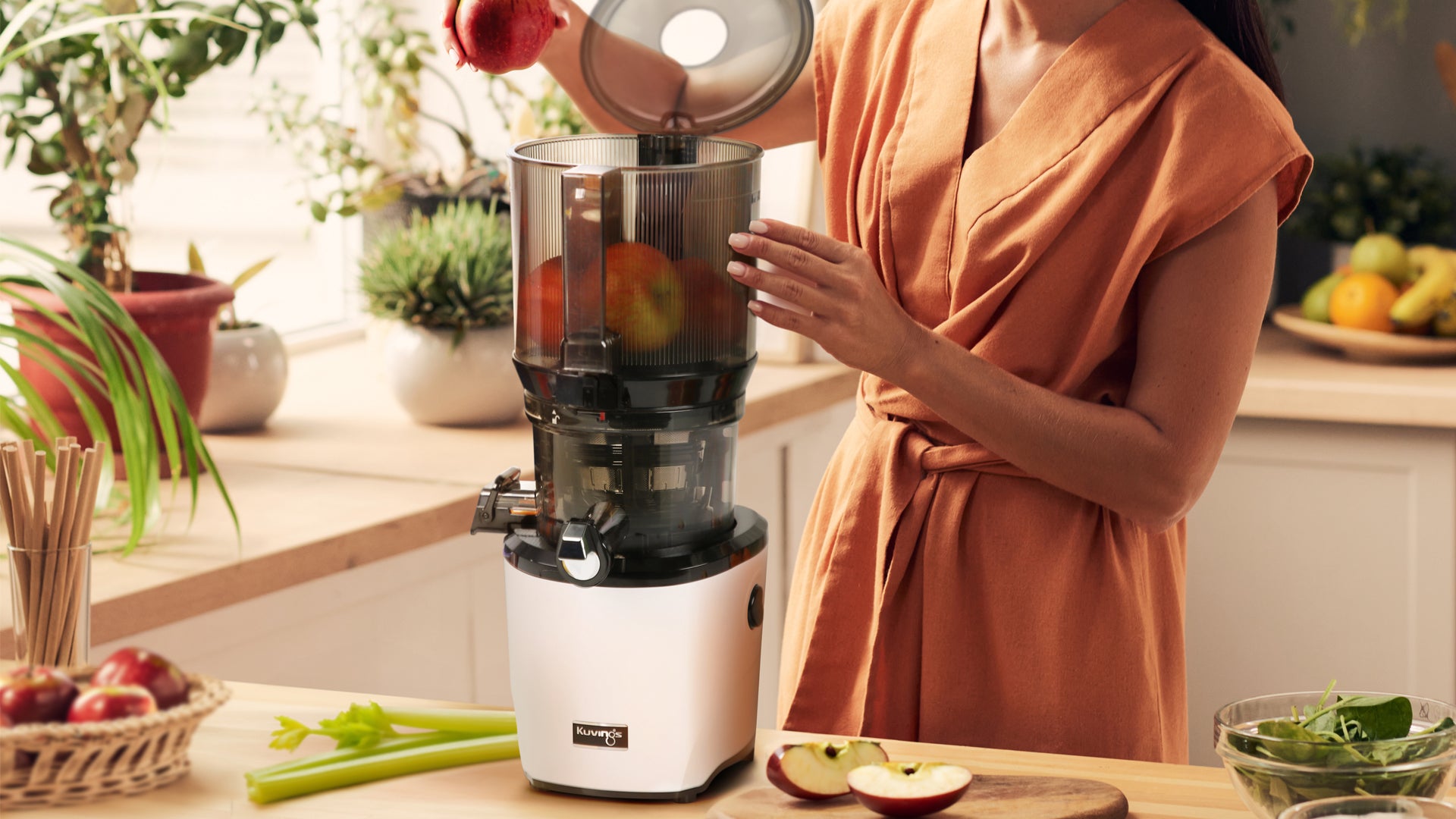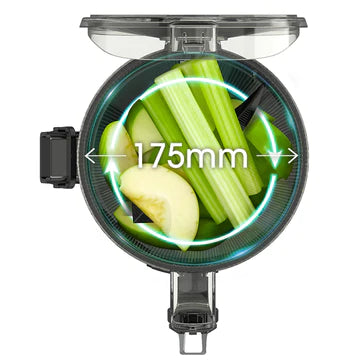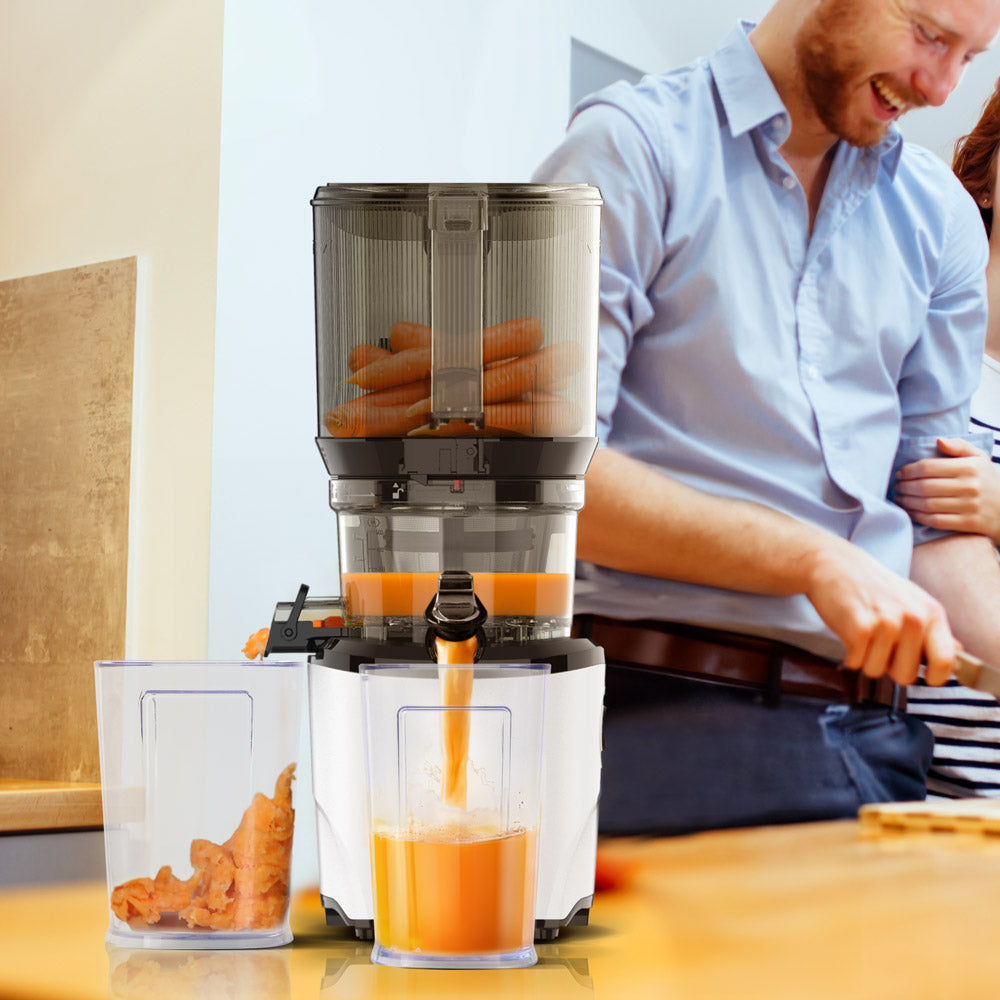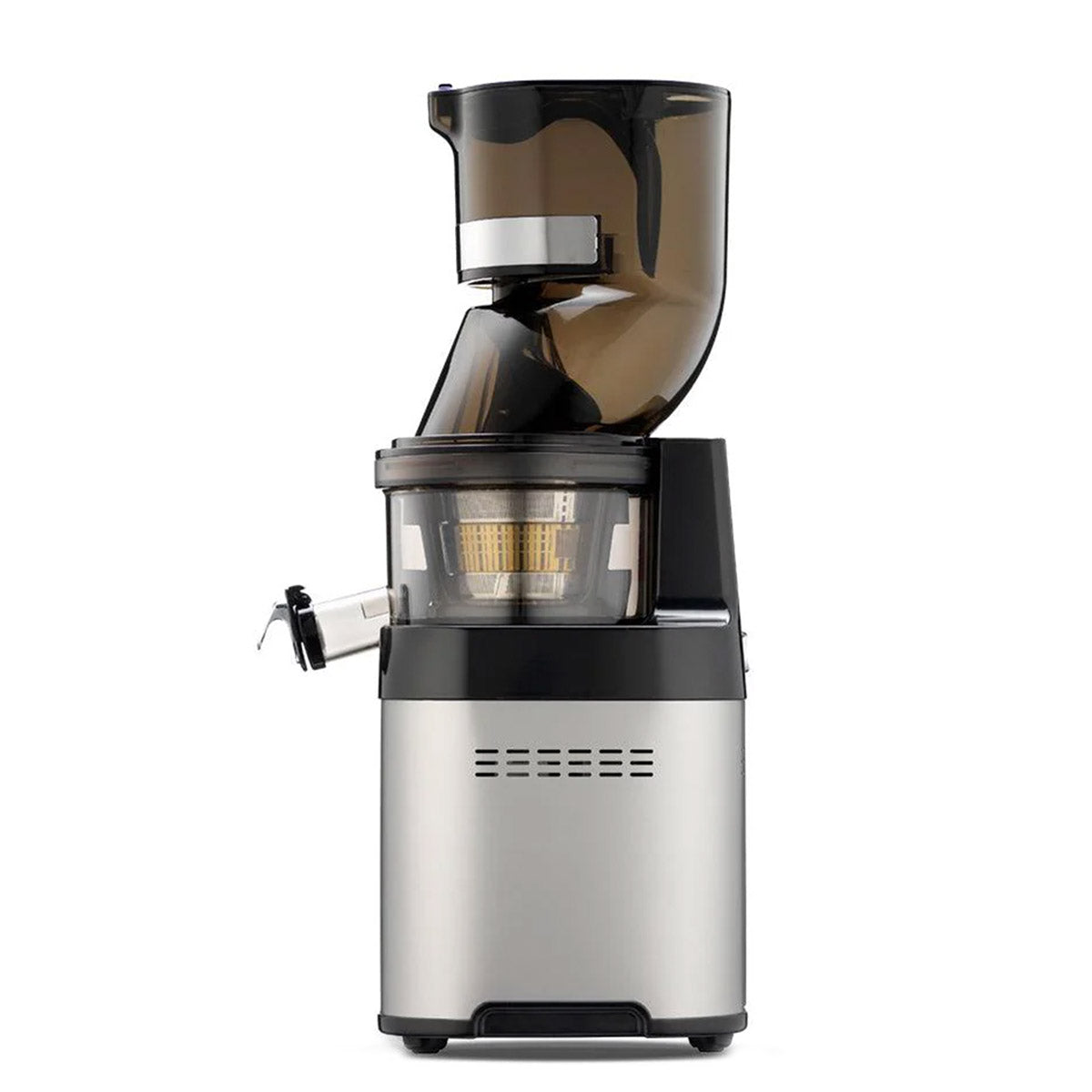When it comes to juicing, not all methods are created equal. While fast juicers are convenient, slow juicers stand out for their ability to extract nutrient-rich, smooth, and delicious juices. But what makes slow juicing so unique, and why is it better for your health? Let’s dive into the science behind this innovative technique and how it delivers superior benefits compared to traditional juicing methods.
What Is Slow Juicing?
Slow juicing, also known as cold-press juicing, uses a gentle, low-speed process to crush fruits and vegetables before pressing them to extract juice. By reducing oxidation and heat production, this method preserves the nutrients and enzymes in your food.
The Benefits of Slow Juicing

Preserves Nutrients and Enzymes
Traditional fast-juicing techniques often generate heat due to their high-speed blades, which can destroy delicate nutrients and enzymes. Slow juicing avoids this by using the cold-press techniques, helping you retain more vitamins, antioxidants, and live enzymes in your juice. This makes your juice not just tasty but packed with nutrients.

Minimizes Oxidation for Maximum Freshness
The slow juicing process prevents excess air from mixing with your juice, minimising oxidation. This ensures your juice stays fresh, vibrant, and nutrient-packed for longer.

Reduces Food Waste
Slow juicers are highly efficient, extracting more juice and leaving behind drier pulp. This means you’re making the most out of every fruit and vegetable, saving money and reducing waste.

Encourages a Healthier Lifestyle
The superior taste and texture of juice made with slow juicers make it more enjoyable, encouraging you to incorporate more fruits and vegetables into your diet regularly.
Curious to see the benefits of slow juicing in action? Check out our Kuvings Malaysia Instagram video here to learn more about how slow juicing can elevate your juicing experience. Don’t just take our word for it—watch and see for yourself!























![[NEW] REVO830 Whole Slow Juicer "The Dark Knight" - Kuvings.my](http://kuvings.my/cdn/shop/files/REVO830_multi-function.webp?v=1741158438&width=1200)
![[NEW] REVO830 Whole Slow Juicer "The Dark Knight" - Kuvings.my](http://kuvings.my/cdn/shop/files/contents_compare_01_360x_677de4d1-1209-4ada-b8e3-d1445cee5e84.webp?crop=region&crop_height=360&crop_left=0&crop_top=0&crop_width=360&v=1741158438&width=360)
![[NEW] REVO830 Whole Slow Juicer "The Dark Knight" - Kuvings.my](http://kuvings.my/cdn/shop/files/cold-press-juice_00.jpg?v=1741158438&width=1200)
![[NEW] REVO830 Whole Slow Juicer "The Dark Knight" - Kuvings.my](http://kuvings.my/cdn/shop/files/sub_buying-guide_05_9f06c62f-683c-4247-8c93-efb0111660e5.jpg?crop=region&crop_height=920&crop_left=15&crop_top=0&crop_width=920&v=1741158438&width=950)
![[NEW] REVO830 Whole Slow Juicer "The Dark Knight" - Kuvings.my](http://kuvings.my/cdn/shop/files/IndyBest_banner.jpg?v=1741158438&width=1080)
![[NEW] REVO830 Whole Slow Juicer "The Dark Knight" - Kuvings.my](http://kuvings.my/cdn/shop/files/REVO830_1080x1080_773ec9d9-75c2-495e-b256-6d01ef58ba78.jpg?v=1741158438&width=1080)
![[NEW] REVO830 Whole Slow Juicer "The Dark Knight" - Kuvings.my](http://kuvings.my/cdn/shop/files/EVO820REVO830_1080x1080-_1.jpg?v=1741158438&width=1080)
![[NEW] REVO830 Whole Slow Juicer "The Dark Knight" - Kuvings.my](http://kuvings.my/cdn/shop/files/2022_revo-und-evo_02.jpg?v=1741158438&width=1000)
![[NEW] REVO830 Whole Slow Juicer "The Dark Knight" - Kuvings.my](http://kuvings.my/cdn/shop/files/REVO830_01_540x_636872b5-787d-48dc-a4f6-0d006b49a63f.webp?v=1741158438&width=540)
![[NEW] REVO830 Whole Slow Juicer "The Dark Knight" - Kuvings.my](http://kuvings.my/cdn/shop/files/shopping.webp?v=1741158438&width=600)
![[NEW] REVO830 Whole Slow Juicer "The Dark Knight" - Kuvings.my](http://kuvings.my/cdn/shop/files/2L9A7313-e1690867035583-700x751.jpg?crop=region&crop_height=700&crop_left=0&crop_top=0&crop_width=700&v=1741158438&width=700)
![[NEW] REVO830 Whole Slow Juicer "The Dark Knight" - Kuvings.my](http://kuvings.my/cdn/shop/files/kuvings-whole-slow-juicer-revo830-black-revo830b_main_kitchen_innovation_1667x_64f4e0fc-2684-4f8f-af3b-8aeb0a3cca04.webp?v=1741158438&width=1000)
![[NEW] REVO830 Whole Slow Juicer "The Dark Knight" - Kuvings.my](http://kuvings.my/cdn/shop/files/SNS-REVO830-Lifestyle-62-1-1-Revised0.jpg?v=1741158438&width=990)
![[NEW] REVO830 Whole Slow Juicer "The Dark Knight" - Kuvings.my](http://kuvings.my/cdn/shop/files/REVO830-wholeslowjuicer-coldpress3.webp?v=1741158438&width=900)
![[NEW] REVO830 Whole Slow Juicer "The Dark Knight" - Kuvings.my](http://kuvings.my/cdn/shop/files/3_bf54f2a4-1c87-4015-94d7-3b7e7de053f6.png?crop=region&crop_height=461&crop_left=0&crop_top=0&crop_width=461&v=1741158438&width=461)













